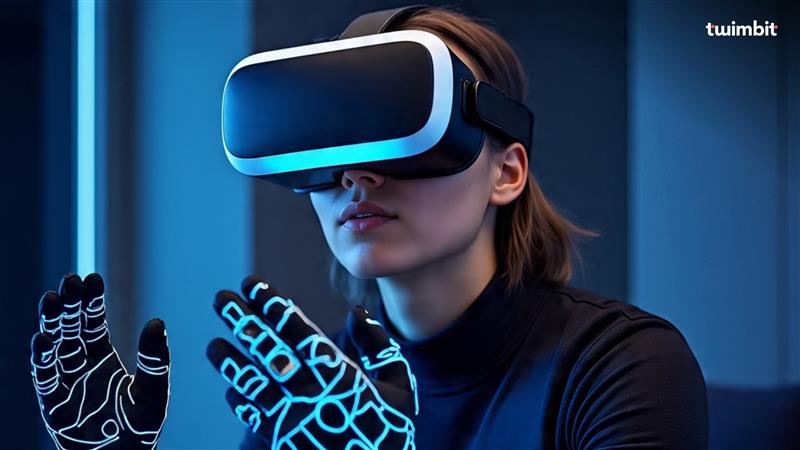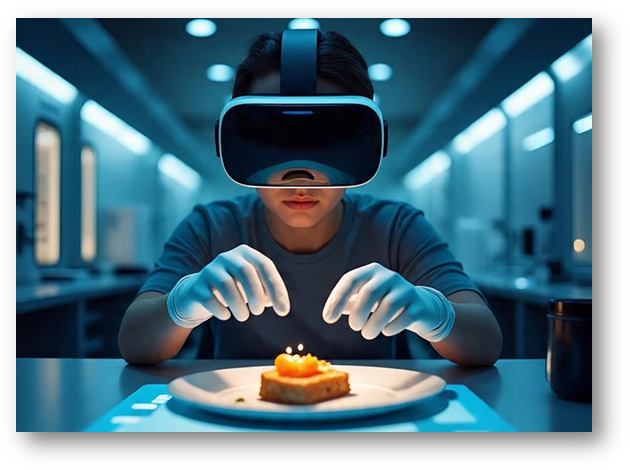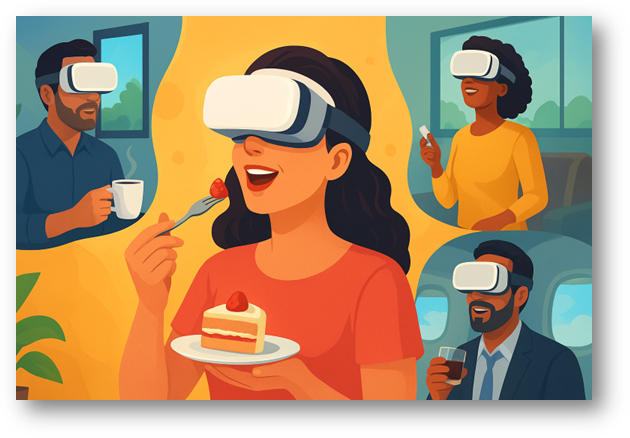November 21, 2025

Imagine browsing a café’s website and not just seeing a chocolate cake but actually tasting it.
Picture walking through a virtual home tour and smelling the scent of freshly baked bread wafting from the digital kitchen.
Sounds futuristic? Not anymore.

Welcome to the next frontier of sensory marketing, where brands don’t just tell stories, they trigger senses.
Researchers at Ohio State University have developed an e-Taste device, and this has given CX practitioners goosebumps. For the first time, technology is stepping into the emotional powerhouse of human perception, taste.
For decades, brands have been designing experiences around sight and sound. The visuals of an ad, the tone of a brand voice, the music behind a campaign, all carefully crafted to shape perception.
Then came touch, through packaging, texture, and interactive tech. Smell followed, giving us scent diffusers in stores, signature hotel fragrances, and immersive brand pop-ups.
But taste, the most visceral and emotionally charged sense, remained out of digital reach. Until now.
The e-Taste system simulates flavor by sending micro-electrical signals and chemical combinations directly to the tongue, recreating sensations like sweetness, bitterness, and saltiness, all without any food.
And when you combine this with VR, it’s not just virtual reality anymore, it’s sensory reality.
Smell-based VR devices have existed for a while, but it’s the addition of taste that’s turning this into a full sensory revolution.
This isn’t just a cool invention, it’s the moment where CX, neuroscience, and digital innovation converge.
And we’re unveiling the top 5 industries that are about to be transformed by this sensory leap.

1. Real estate: Selling a feeling, not just a floor plan
Developers like Gamuda Land have already brought immersive VR and AR tours into property sales. Now imagine letting potential buyers step into a digital home, and taste the freshly brewed coffee on the counter, or smell the comforting aroma of bread in the oven.
That’s emotional marketing in its purest form.
Real estate will move beyond visuals to selling lifestyles through sensory cues, making every virtual home tour unforgettable.
2. Food & Beverage: From “looks delicious” to “Tastes delicious”
The F&B industry will be the biggest playground for taste-enabled VR. Food delivery apps and restaurants could soon let customers sample flavors before they order.
Imagine tasting a new Starbucks drink through your phone, or sampling a pastry before adding it to your GrabFood cart.
Starbucks has already experimented with VR coffee farm tours to connect customers with the origin of their brews.
Now, with taste-integrated VR devices like e-Taste, that immersive journey could go one step further, letting users taste the earthy undertones of Colombian beans or the caramel notes of a macchiato virtually before purchase.
3. Retail: When flavor meets fragrance
Luxury and beauty brands have long used scent as part of the brand experience, from hotel lobbies to cosmetic counters. Now, pairing taste and scent could elevate product discovery.
Imagine L’Oréal’s virtual makeup try-ons (already powered by AR) being enhanced with a sensory twist: a digital lipstick preview that not only shows the shade but lets customers experience its subtle vanilla or cocoa note.
The combination of visual, tactile, and now gustatory cues will make product trials multi-dimensional and emotionally charged.
4. Tourism & Airlines: Destinations you can taste before you fly
Travel brands like Malaysia Airlines are already creating immersive VR experiences to inspire wanderlust. Now, imagine tasting a tropical drink before booking a flight or experiencing the signature coffee served in the air.
Taste could become the new teaser for travel, where emotion and memory collide before the booking even happens.
5. Entertainment & education: Storytelling that engages every sense
Cooking shows, movies, and even video games could soon come with flavor integration. Viewers could taste the meal being cooked on-screen or smell the rain during a scene. For education, imagine history lessons where students can experience the taste of ancient cuisines or the smell of spices from trade routes. This is experiential learning, powered by sensory engagement.
This sensory leap represents more than technological innovation, it’s a shift in how brands will connect with people.
CX leaders have long known that emotion drives memory, and memory drives loyalty. When you add taste and smell to digital experiences, you’re no longer designing screens, you’re designing moments that stick.
In the near future, customer experience won’t just be about what looks real.
It’ll be about what feels, smells, and tastes real.
Welcome to the era of sensory marketing 2.0, where experience becomes biology.
Connect to unlock exclusive insights, smart AI tools, and real connections that spark action.
Schedule a chat to unlock the full experience